You love travelling and this year you’re sure: you want to visit the ruins of Tikal, one of the largest and most important Mayan excavations in history. Your trip to Guatemala is a question of a few hours’ flight and excitement, because the adventure of your life awaits you once you land.
To give you an idea, we tell you that Tikal is one of the most magical destinations in Central America and a paradise we should all visit at least once in our lifetime.
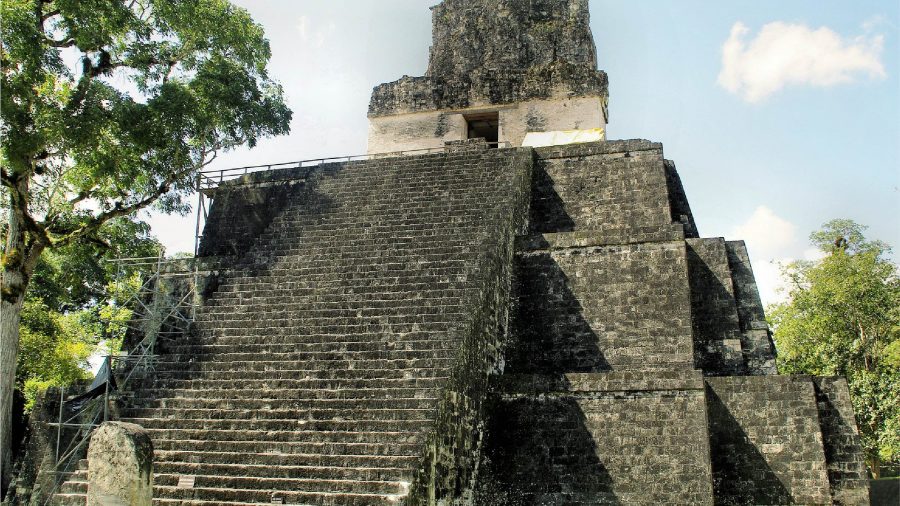
The Mayan city Tikal in Guatemala is the most important nature reserve in the country. Declared a Natural Park in 1955 and a UNESCO World Heritage Site in 1979, Tikal has become one of the most emblematic cultural and architectural symbols of Mayan culture.
Located in the Petén region, Tikal is one of the few places in the world where past and present merge in an exceptional and spectacular way, leaving its image forever imprinted on our retina.
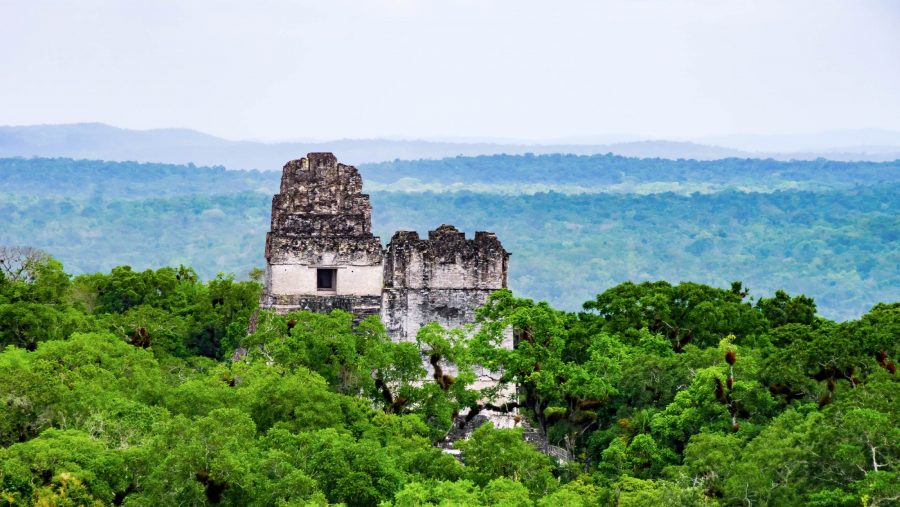
At Tikal, we can’t forget about another of the most important parts of the area: its varied and rich flora and fauna. Monkeys and birds will accompany us on a tour where they’re also the stars.
Few experiences are comparable to discovering the ruins of Tikal in such an attractive environment and natural setting. So if you’ve decided to visit this place, keep your eyes open and your five senses ready to live an unforgettable experience.
Tikal’s climate
Tikal’s climate is tropical and therefore has two well-defined periods: From May to November it’s rainy and from November to April it’s dry and very sunny.
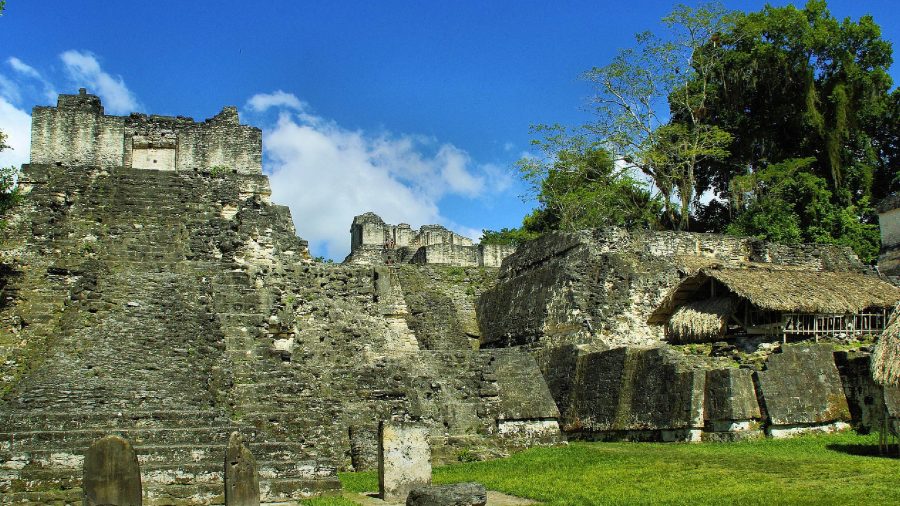
However, even on rainy days, there are few hours of rainfall compared to the hours of sun. And even in the rainiest months you have an average of 7 or 8 hours of sunshine per day.
How do I get to Tikal?
The question is rather “How would I like to get to Tikal?”
In principle, the most convenient and economical way is to talk to Asuaire Travel and choose our all-inclusive package. Because getting to Tikal is no easy task if you’re a completely independent traveller.
First, you have to think that it’s in the middle of the Petén jungle, the closest village is Remate (33 km, 45 minutes away) and the nearest town is Flores , 60 kilometres away.

Of course, the best way is to go on a package tour organised by Asuaire Travel
However, if you want to go independently or rent a car there are ways to get there. Take into account that you’ll need more time and it’s not always safe to reach Tikal by land.
The first question to ask is whether you want to go overland or by plane. We recommend flying, of course. Although there are accessible options for all budgets in very comfortable buses, the trip is very long and tedious.
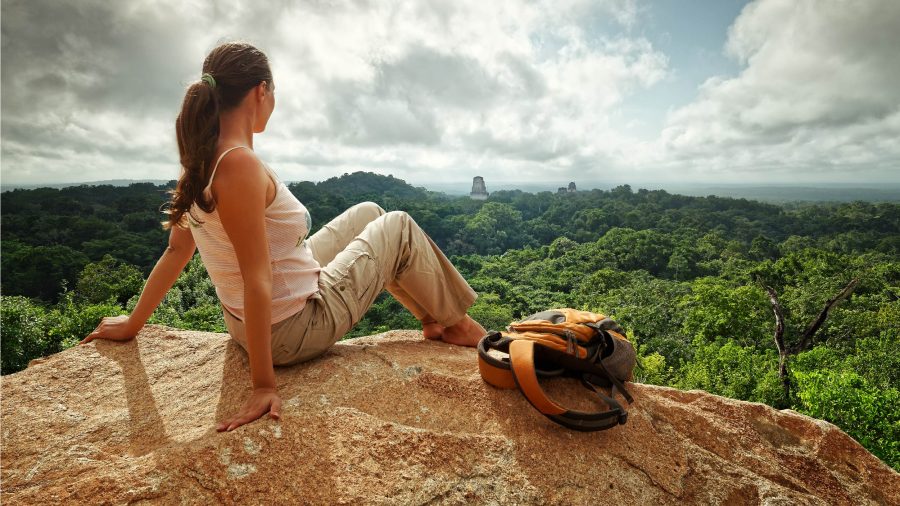
There are 490 km (304 mi) between Guatemala City and Flores by car or bus and the duration of this trip by road will be approximately ten hours.
The flight is obviously more expensive but lasts only 45 minutes and takes you to Flores, 60 kilometres away from Tikal.
There you can book a hotel, as there are hotels for all budgets, and arrange your day trip or your transport to the archaeological monument. There are regular buses all day from Flores central station.
Contenido
If you go by hire car
From Antigua or Guatemala it’s best to go towards Puerto Barrios and then to Peten. It will take about 10 hours. It’s important to leave very early and stay on the road without taking breaks as it’s dangerous and better to drive only during the day.
The asphalt road is fine, but in rainy weather you might encounter some potholes.
We don’t recommend travelling by public bus at all, it’s time-consuming, you have to make several transfers and it can be dangerous.
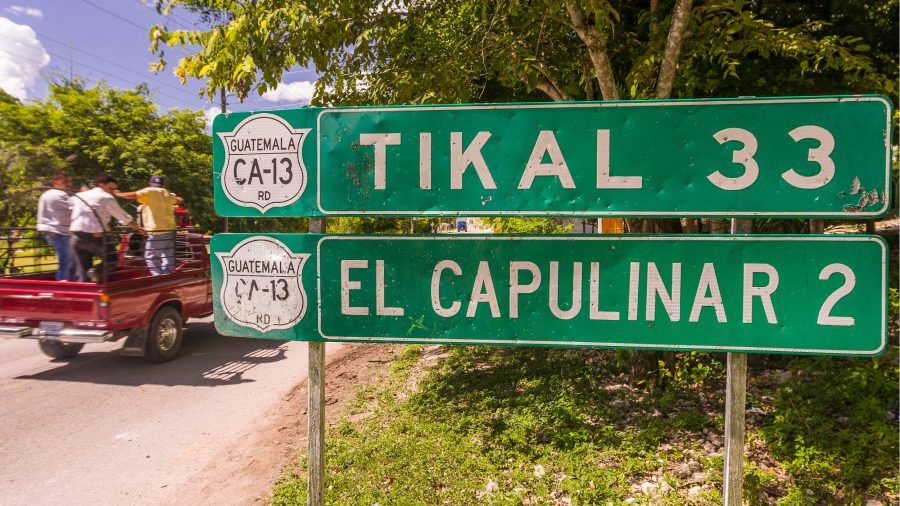
We reiterate that it’s best to take an organised trip and then take a car or leave on your own if you wish.
Is it worth watching the sunrise in Tikal?
If it works out, it’s a wonderful possibility.
On clear days and if you don’t mind getting up at about 3 am, with the howling of the monkeys in the background and toucans flying among the trees, the view of the subtle mist over the jungle and the ancient Mayan buildings is simply magical. Like travelling back in time to a fantasy dimension.
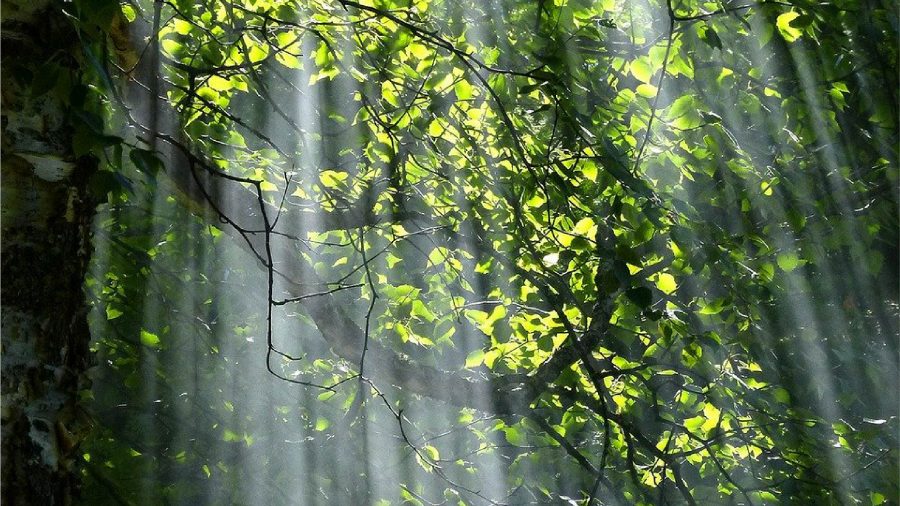
The cost of these sunrise tours is usually a bit more expensive, but it’s worth it.
The use of tourist guides is obligatory before and after the official opening hours of the National Park and your ticket to see the sunrise includes the rest of the day.
In addition, it’s an excellent way to avoid the masses of tourists who arrive at around 9-10 in the morning and you’ll have much more time to explore this city, the largest of all the old American cities.
How do you pay the entrance fee to Tikal?
If you go with an organised package, the price is usually included (ask your travel expert at Asuaire Travel), however if you’re in a rented car or are a completely independent traveller, take into account that you can only pay in quetzals or with American dollars and no other currency or credit or debit cards are accepted.
The same is true of the food and drink stalls inside the park.
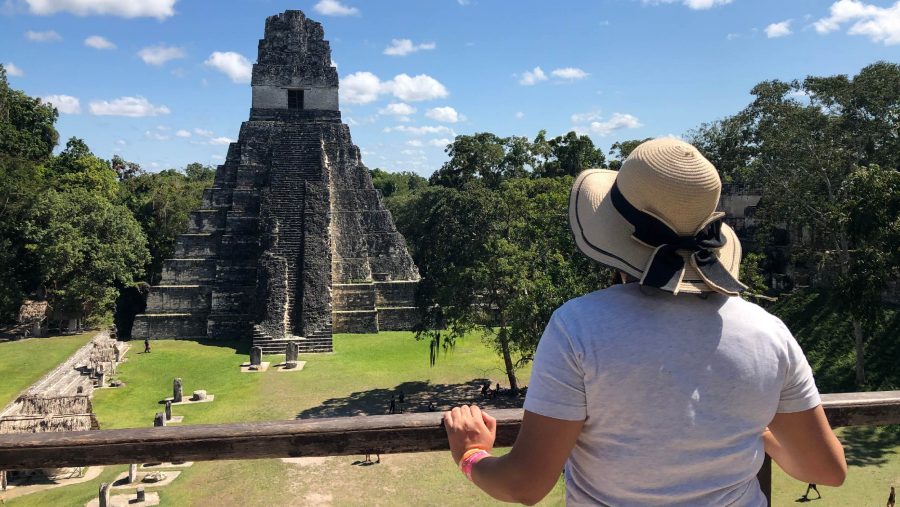
Essential tips for visiting Tikal
As a good adventurer, before starting the route you have to prepare yourself properly. If you let us, below we’ll offer you a series of tips, given our experience (and that of many people who decided to visit Tikal) in the area.
-Take food. At the entrance to Tikal there’s a small restaurant, but it’s very expensive and there are always very long queues.
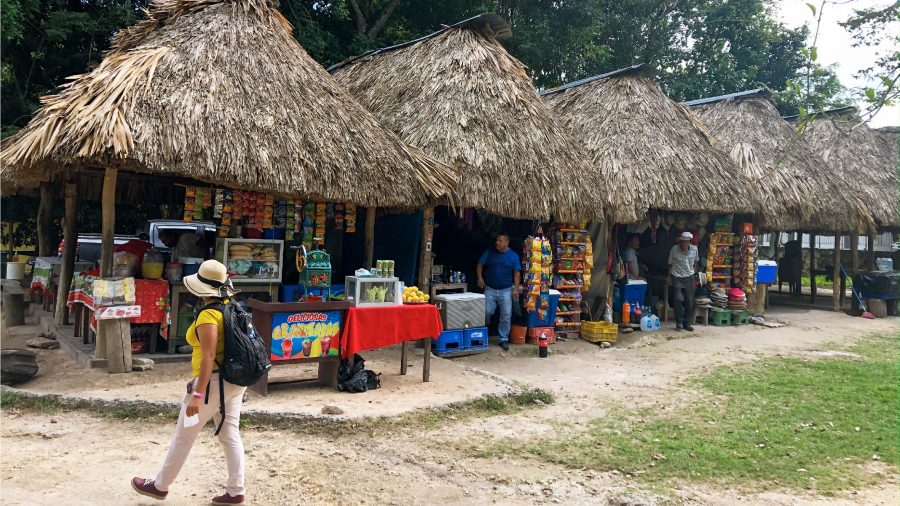
-Get an online map of the site and download it to your phone. Even though paper maps are everywhere and are relatively cheap, they’ll only serve you for this visit and unless you want it as a souvenir, it’s not worth buying one.
-Wear cool and comfortable clothes and closed hiking shoes. Even if you don’t walk much, remember that you’ll be in the rainforest and it’s not a good idea to walk in open sandals because there are uneven areas of the trails.
-When it’s time to return, whether you go on a tour or on a public bus, it’s better to keep the time in mind so as not to be left in such an isolated place.
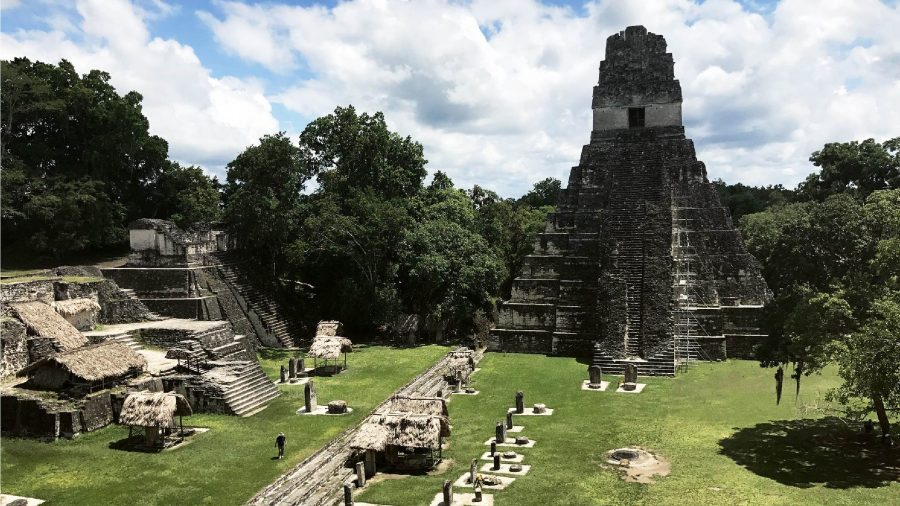
-Wear suncream (and sunglasses) and mosquito repellent at all times, even under your clothes.
– It’s essential to carry your passport. They won’t let you in without showing it.
-Carry a lot of water, energy bars and fruit.
-As our visit starts very early in the morning, it can be cold. It’s a good idea to have a jumper or light jacket to hand. Also, don’t forget about the weather forecast in case it rains.
Our Tour: the adventure begins
Your adventure is about to begin, but before you have second thoughts, let us tell you that you’ve made the right choice with your destination.
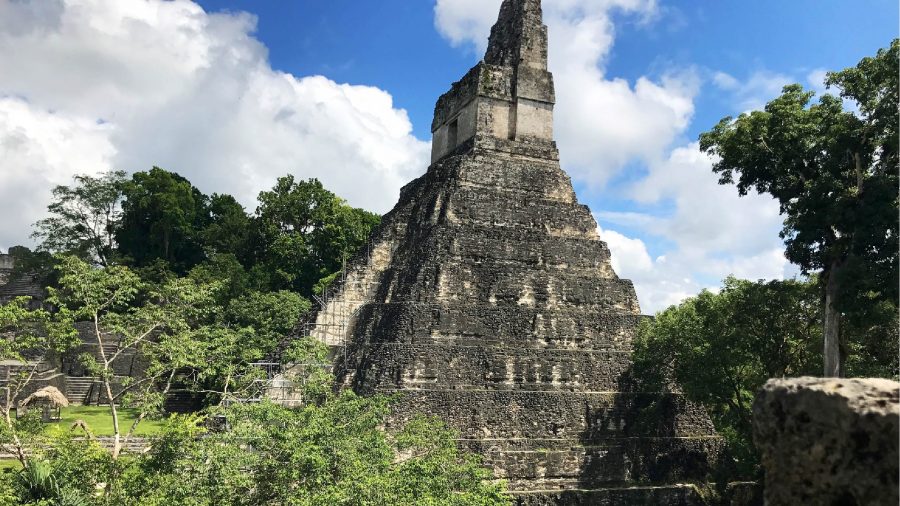
Tikal offers you the chance to enjoy the most amazing archaeological excavations in Guatemala and the world. You’ll discover hundreds of interesting facts about the ancient Mayan culture, as well as the shape of its constructions and their use. You’ll discover the beauty of pre-Columbian Mayan ruins on an excursion where you only have to worry about enjoying yourself, as the rest is pure magic.
Hotel pickup
Your route to Tikal will start at 4 am, when a vehicle will pick you up at the door of your hotel in Antigua or Guatemala to take you to the airport where you’ll catch a flight to the Mundo Maya International Airport in Flores, Petén. After about an hour of flight time, you’ll be greeted by a representative from Asuaire, who will accompany you to the wonderful “place of voices”, better known as Tikal.
Once the tour of the Tikal ruins begins, the reputable guide will show you some of the most fascinating places in Mayan history and culture. During the tour you’ll visit the archaeological ruins of the pre-Columbian civilization, Temple I of “The Great Jaguar”, one of the most important temples in Tikal, and Temple II, known as “The Masks”. In addition, you’ll visit the archaeological ruins of the pre-Columbian civilization and the model of the complex of the Temples and the Central Acropolis.
At midday, you’ll enjoy a traditional Guatemalan lunch and later we’ll return to the Flores area, where you’ll have a reception which will end with your return to the hotel or airport.
Some history
Through epigraphic texts it’s understood that the history of the city is very well-documented, so it’s easy to know when its peak and decline began. Its strategic position, together with the historical events reflected in each of its architectural monuments, has allowed archaeologists to understand the importance and role of this city with respect to the rest of Mayan city-states during this period known as Classic.
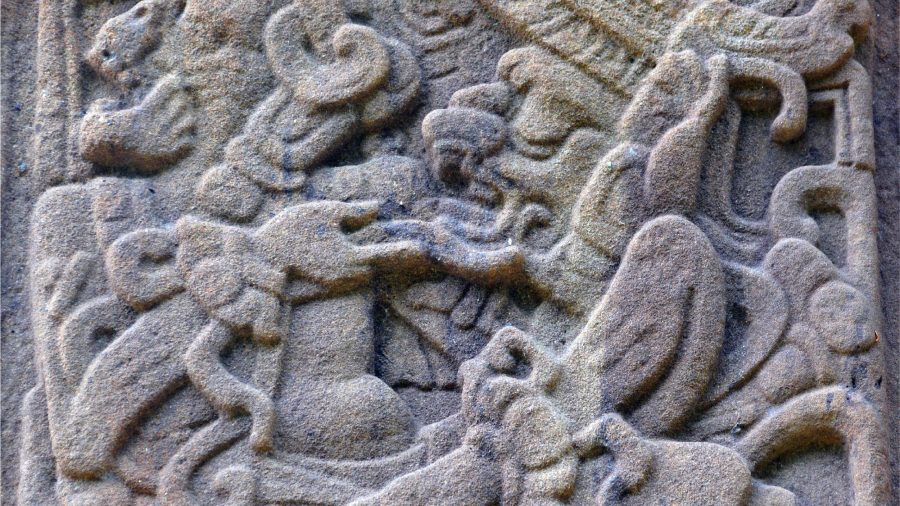
In Tikal, Guatemala, there are more than three thousand monuments spread over an area of 16 excavated square kilometres, which makes it the largest city in the Mayan world. At the heart of the city we find a very large space, which used to house the buildings where the ceremonies which this ancient civilisation was used to were held.
On the sides of this ceremonial centre are the twin constructions known as Temple I and Temple II. In addition, there are other ceremonial complexes such as the North, South and Central Acropolis and the Seven Temples square or the Ballcourt among many others. Many of them date from the 600s and 800s of our era.
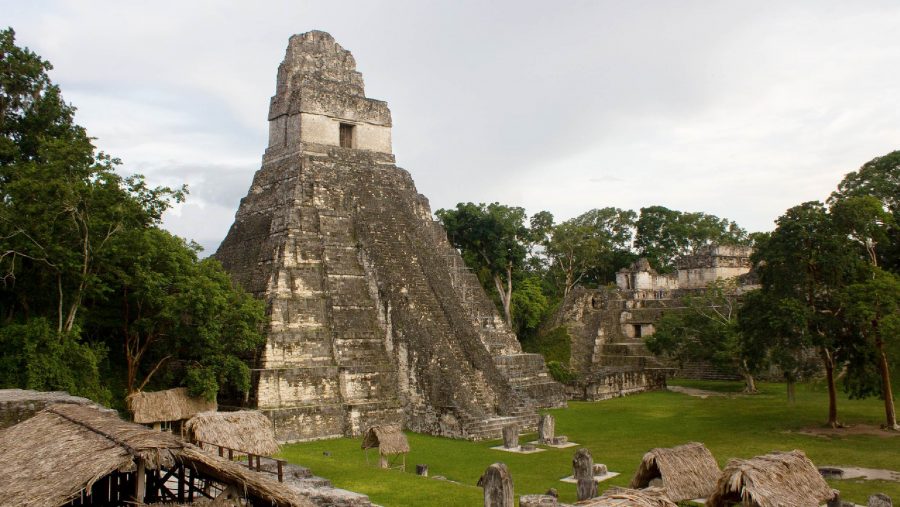
Tikal achieved its economic and cultural development from the year 564 onwards. However, from that date, there’s a void attested by the absence of monuments and inscriptions which prevents us from knowing part of its history and the facts related to the dynasties which ruled it through the different centuries.
It would be later, specifically from the seventh century onwards, when Tikal began to experience a renaissance in terms of the construction of buildings and memorial steles. Culture, politics and the economy began a stage of splendour which would last until the ninth century.
Interesting facts about Tikal
There are hundreds of questions still surrounding the city today, including about the number of inhabitants which Tikal hosted at its height. When counted in a first study half a century ago, some 50,000 inhabitants were estimated, but in the most recent research, a figure of 200,000 has been obtained.
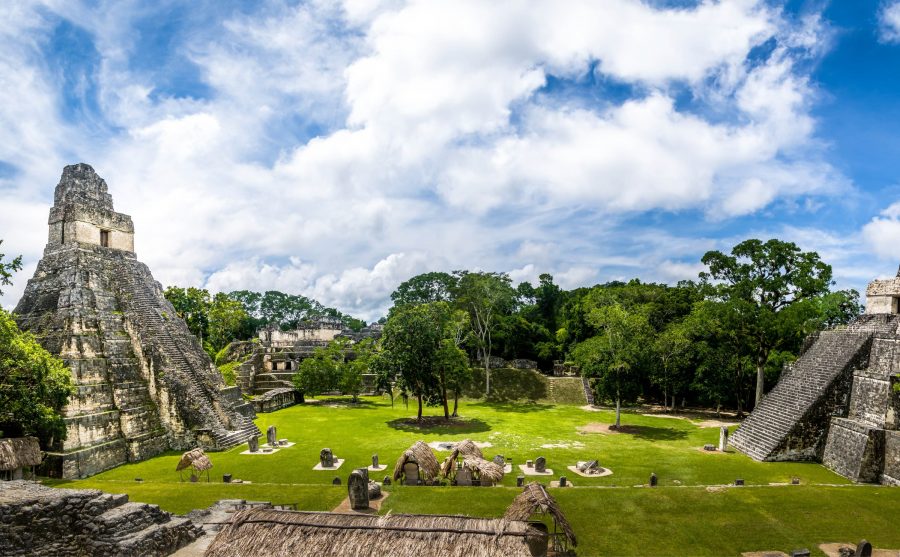
One of the main reasons why the exact demographic data is unknown is the city’s urban planning. It’s not like other cities which emerged in the Mesoamerican area such as Tenochtitlan, where ceremonial buildings, tombs and precious objects or jade masks of incalculable value were also found, thanks to which the great purchasing power of the people buried there is known.
As an interesting fact, we can tell you that there were rulers in the tombs whose portraits can be seen in some reliefs and whose lives were reflected in the glyphs of the city.
What will you see in Tikal?
Now that you’ve gone into the history of this Mayan city and know what some of the highlights of our tour are, we suggest you discover some of the most important architectural constructions.
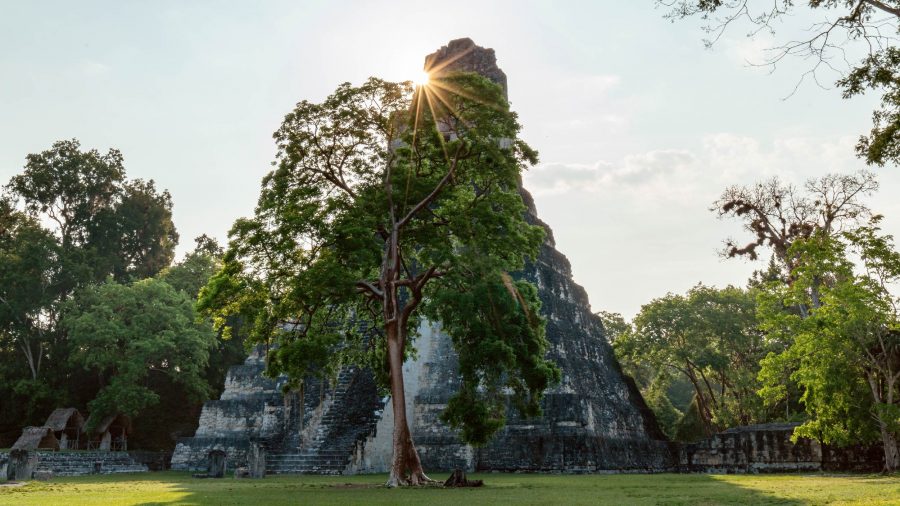
In addition, you’ll visit Guatemala and its archaeological sites with our local guides.
Soaking up the Mayan culture, its history, traditions and architecture before visiting the place is a true wonder. Getting an idea of what you’re going to see is important, although when you see it in person you’ll be amazed.

If you’ve got this far, it‘s because you have everything prepared and you’re ready for adventure, so read on because one of the parts you’ll like best is coming up.
Mayan City Tikal Guatemala
The Tikal Ruins will allow us to have a perfect vision of the ancient Mayan civilization which reigned in this area from the fourth century BC. During the tour, don’t forget about local wildlife, such as the monkeys and birds which will accompany you on your visit, making it even more spectacular if that’s possible.
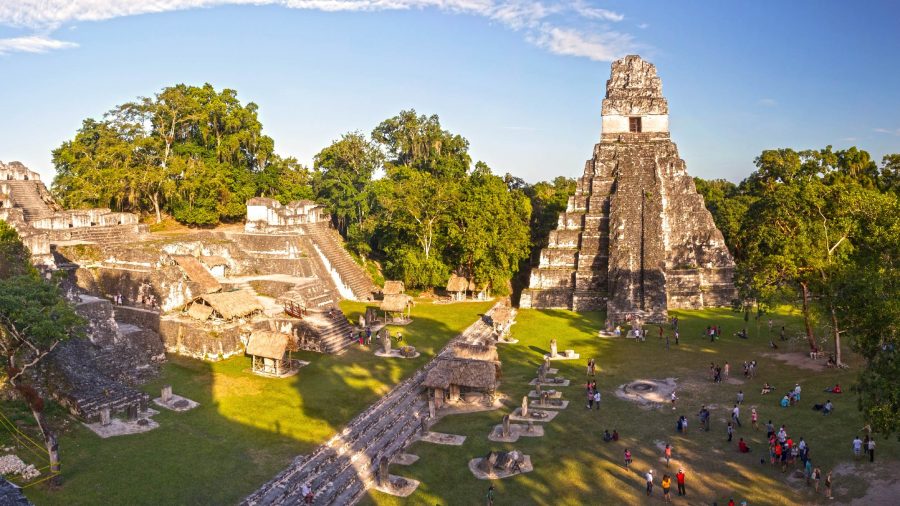
The Acropolis
The first stop will be a clearing where you can enjoy the magnificent spectacle of being in the Central Acropolis at Tikal. And we say the Central Acropolis because in Tikal there are two more: the North and the South. These were areas where ceremonial buildings were established and normally used by the political, administrative and religious power.
The Central Acropolis housed a huge complex of residential and administrative palaces. It served as the residence of the ruling family at Tikal and has 45 buildings and 6 courtyards, surrounded by palaces which had up to three floors. Some of these palaces were used as residences and many of their chambers still house stone beds on which skins and carpets were arranged to make them comfortable.
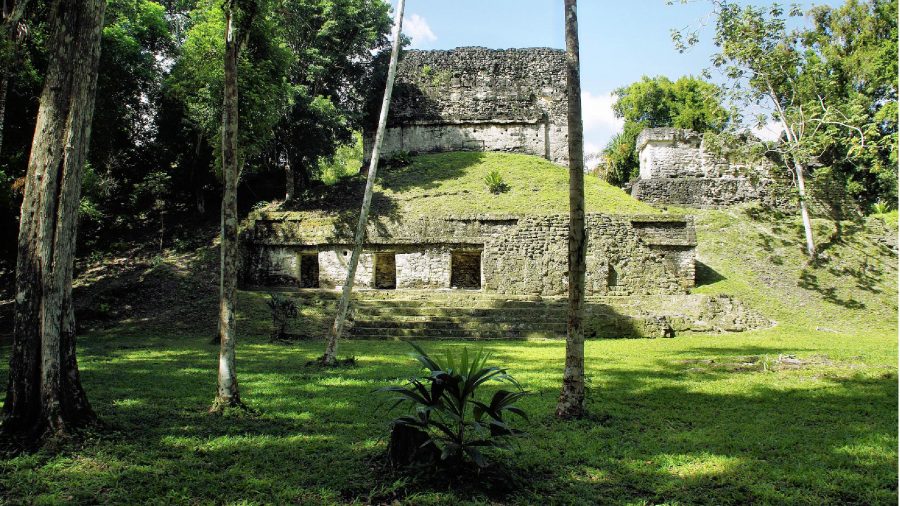
Together with the Lost World, the North Acropolis is one of the oldest structures in the city, as well as being one of the most studied architectural complexes in the Mayan civilization. The year of its construction was 350 AD, as a funeral temple of the dynasty which ruled during the classic period. Gradually, as the number of burials increased, temples were added in the older upper parts.
One of the curiosities of this Acropolis is that Stela 31 (where the jaguar, one of the gods which protects the city, is represented) was found there. In addition, in Temple 33 they discovered the mask of the god with the long nose. It’s believed that this mask was covered in stucco and painted, like the building which housed it, in colours such as red, green, yellow, and blue.
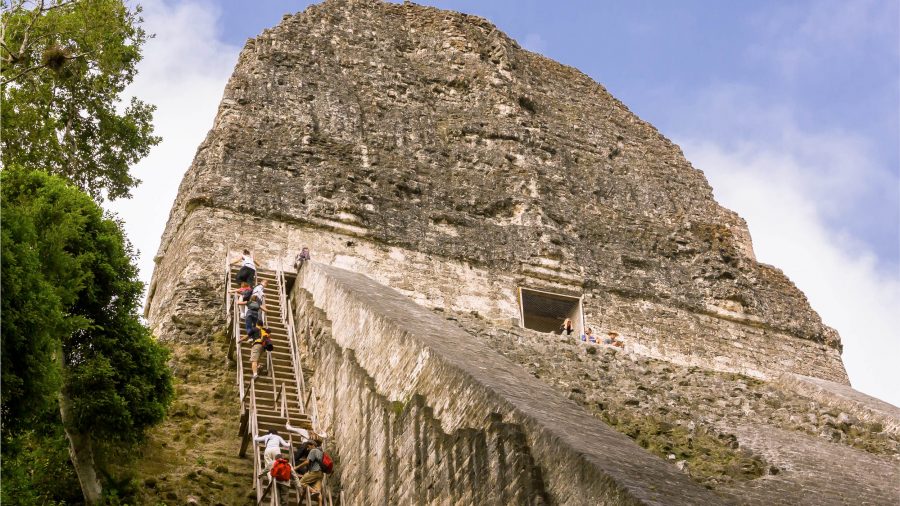
Next to Temple V we find the South Acropolis which is at present pending excavation and yet to be studied. It occupies more than 2.2 hectares and, like other areas of the city of Tikal, very little is known about it, since research has not advanced enough to discover in-depth details.
According to some research studies by archaeologists, it may be a very old structure, since the platforms on which it is located are different from each other.
Temple I
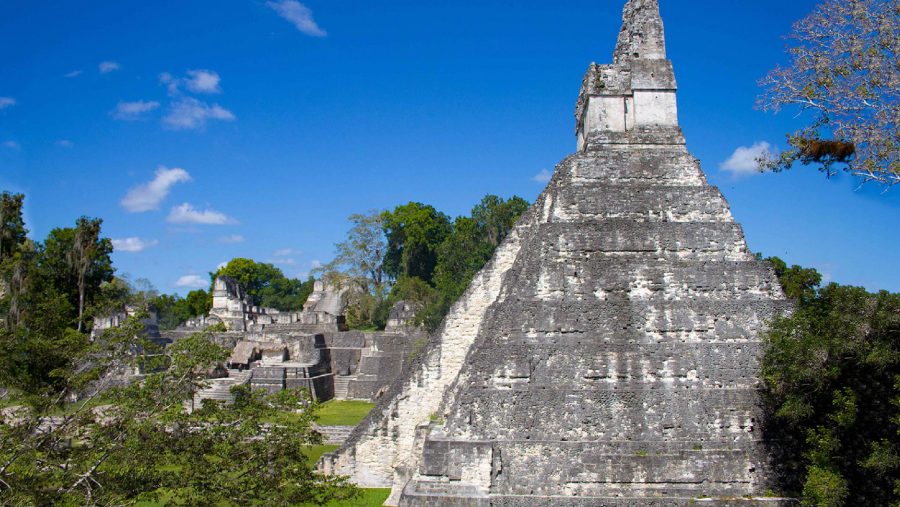
It’s known as the Mayan Temple of the Great Jaguar and the beginning of its construction dates back to the year 700 of our era. It’s a funeral pyramid dedicated to King Jasaw Chan K’awiil I, the ruler who restored the supremacy of the city over other Mayan centres and who was buried there in 734, although its construction wouldn’t be completed until years later.
A steep staircase leads to the top of the pyramid, where there’s a sanctuary comprising three chambers, where only members of the clergy and nobility were allowed to enter. In the case of the town, its inhabitants attended ceremonies from the front square of the temple.
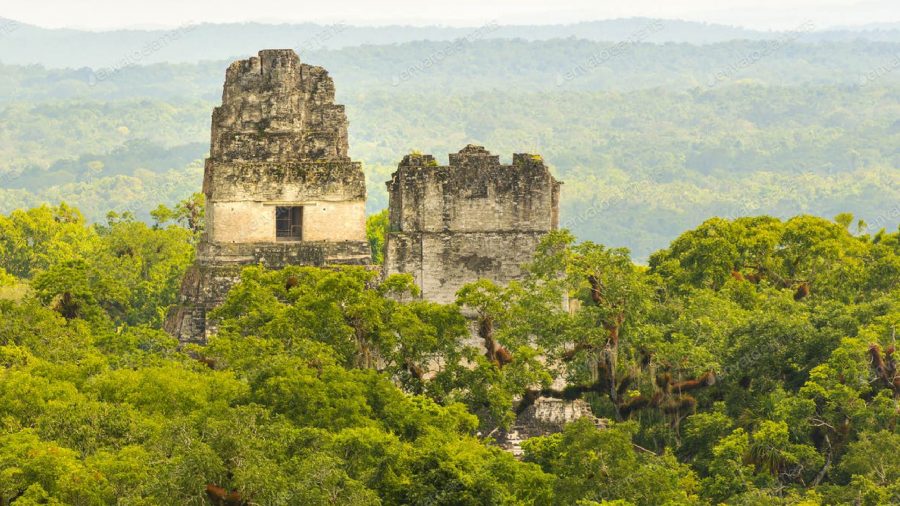
The enormous dimensions of this temple express the will to create a staircase which shortens the distance between the world of men and the world of the gods. Near the Temple are the remains of the market and one of the three ballcourts which have been found in the city.
Temple II
Temple II is in front of Temple I, a similar structure but with much smaller dimensions. It’s also known as The Temple of the Moon or the Masks. It’s believed it was built around 700 and its height of 38 meters is simply spectacular.
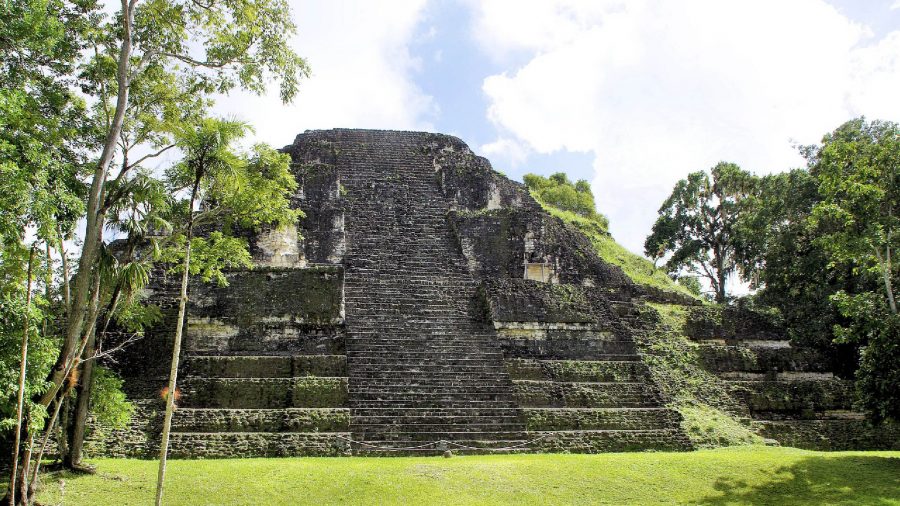
In this case, Temple II was dedicated to the wife of King Jasaw Chan K’awiil I, although her tomb has not yet been found. The portrait found in the excavations can now be visited in the Museum of Natural History of New York.
Temple IV
Known as the Mayan Temple of the Two-headed Serpent or as Structure 5C-a, it’s one of the most emblematic and at the same time, most amazing buildings in Tikal. It’s the tallest building in the classic Mayan world, from which you can enjoy the best views of the archaeological site and the natural world that almost entirely surrounds the city of Tikal.
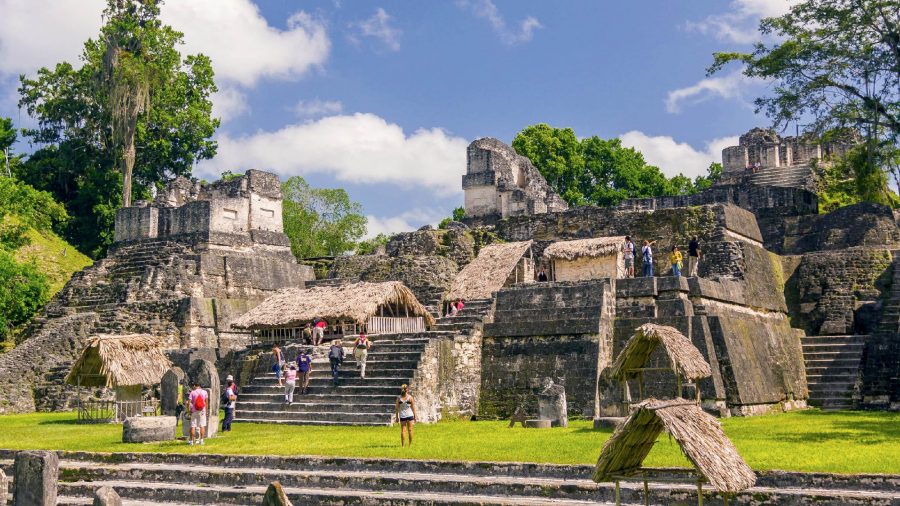
Temple V
Located to the south of the Central Acropolis, it’s one of the most impressive temples in the archaeological site of this Mayan city. Due to the lack of epigraphic inscriptions and the limited research in this regard, the exact date of its construction is unknown.
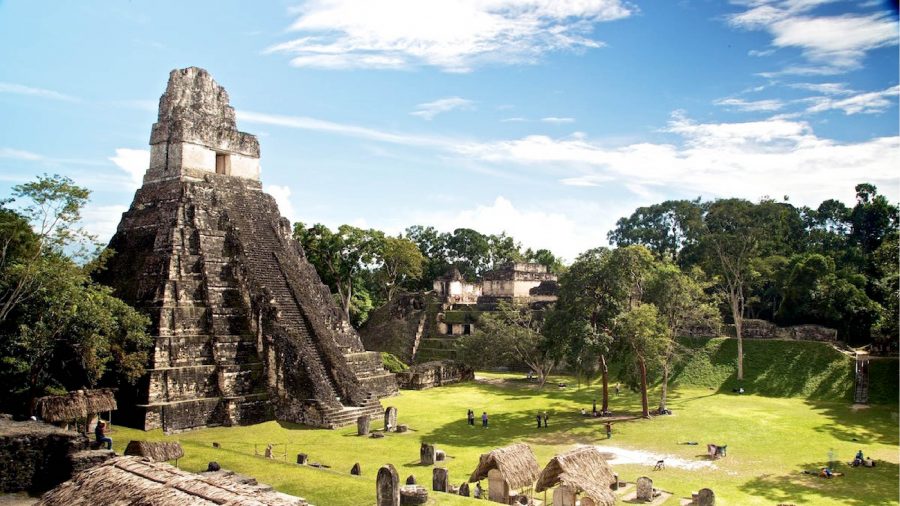
It was damaged by the first explorers. Emergency interventions have been necessary at different times in order to avoid the deterioration of its cresting. For 150 years it was the most forgotten building in the city, suffering the weathering of the passage of time and with little support received for its preservation.
The Seven Temples Square
To the west of the South Acropolis is the Square of the Seven Temples, bordered by a series of practically identical temples, which according to research seem to have begun to be erected in the Late Preclassic period.

The same research indicates that what’s now the Square of the Seven Temples was in the beginnings an area where one of the most important games in the Mayan world took place: ballgame. It’s believed that the inhabitants of Tikal came to this square to watch this game which they enjoyed in their free time and which distracted them.
In conclusion:
We’ve only shown you a small part of the very long history of the ruins of Tikal and some of what you need to know to enjoy this monument which belongs to humanity. From now on, you’re in charge of discovering one of the best and most interesting areas of Guatemala through your five senses.
A spectacular treasure, archeologically, historically and architecturally, which you can’t miss, even if you only visit once in a lifetime. Also, if you visit with us and our expert guides, the experience will be much more enriching.